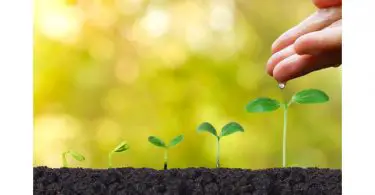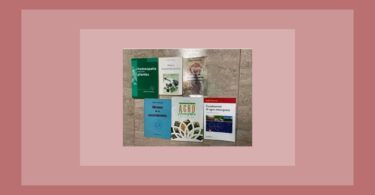Radko Tichavsky is a Czech born Mexican Agrohomeopath. He is a co-founder and director of Instituto Comenius in Mexico and author of Handbook of Agrohomeopathy, 2007 (Spanish) and Homeopathy for Plants, 2009 (Spanish) and creator and teacher of Holohomeopathy.
Agrohomeopathy Course!
Radko Tichavskyi is now offering a one semester virtual course in Agrohomeopathy (in English). You can learn how to define and analyze holons and how to repertorize the specific homeopathic treatment beyond just disease or pest names. You can find out more here: www.icomenius.edu.mx
A Materia Medica and Repertory for Plants: Mark Moodie hosts the website “Considera”, which provides a growing M.M and Repertory for plants and discusses resources for biodynamics and Agrohomeopathy .The website allows the world community to contribute their experiences in planting.
Dear Mr. Tichavsky,
I have a Gardenia plant that was sent to me as a small, already potted plant, 11 months ago. It did well and produced flowers. This summer it is still growing well but has scale insects or mealy bugs that are sucking the life out of it. The stems, especially tips, are covered with sticky fluids which then crystalize a bit. I can scrape them off with my nails but there are too many. The new leaves are chlorotic. I use maxi crop liquid seaweed to fertilize. It has been an indoor plant so far.
Thank you for your help.
Barbara Bason
Radko Tichavsky:
Dear Barbara,
You can use on your Gardenias a spray of Equisetum arvense 6 CH with a little olive oil as an adjuvant. This will eliminate the scale insects. But it is also very important to suspend the application of fertilizers derived from seaweed, since it is possible that they cause sodium and iodine toxicity. Natrium iodatum 30 CH can also be applied once every two weeks to help drain excess sodium and iodine from soil and plant.
Application of Ferrum phosphoricum 6 CH will eliminate the yellowing in the leaves of the Gardenia. It is convenient to add five drops of lemon to each liter of irrigation water to help the plant to develop properly and absorb iron. The homeopatic constitutional remedies for Gardenia are Apium graveolens, Panax ginseng and Rosmarinus officinalis and can be applied alternatively once a month.
Dear Mr. Tichavsky,
Many apples on my trees were destroyed by larvae of the Codling Moth (Cydia pomonella) last year, when the apple trees bloomed. They eat down to the core of the apples. I don’t want to use chemicals at all, so is there a way to prevent this next season? I live in Tennessee (U.S.) Average Temperatures in the coldest month 27.9°F. In the warmest month, the average temperature is 88.7°F. The zipcode is 37920.
Thank you
Gertrude
Radko Tichavsky:
Dear Gertrude,
Cydia pomonella is a persistent but very controllable pest, if you perform the actions described patiently and systematically. The first treatment begins in the spring before the first adult flight of the Cydia pomonella. We apply Melia azedarach 12 CH on the trunks and on the soil around the trees where the pupae are hidden, and from where they emerge in a staggered form. The applications have to be done every two weeks in the form of spray with a little olive oil as an adjuvant.
In case of persistent infestation by the pupae, the soil is removed very superficially around the trees, and a group of hens are allowed to work under the trees for two weeks in the spring (before the flight of the first adults of Pomonella). In addition, to fertilizing with their droppings, hens are relentless devourers of the pupaes. Subsequently we proceed to plant Ruta graveolens disseminated under the trees.
Increase the organic material content in the soil in the form of mulching. That is, let the native grass and plants grow around the trees and cut them before they forms seeds and leave them in the same place of the cut so that they form a layer of organic material in decomposition. This increases the amount of beneficial fungi in the soil that are also the ones that help control the pupaes in the soil.
During the vegetative development of the apple trees, the constitutional remedy of the apple tree Alchemilla arvensis 12 CH is applied with olive oil as an adjuvant once a month. The complementary remedies that are used in the treatment of this symptomatology are Viola tricolor 12 CH (made of flowers) Sophora japonica 12 CH (elaborated from buds or leaves, although the preparation of leaves has less efficiency) and Sambucus canadiensis (prepared from flowers). Applications are sprayed over the treetops every two weeks alternately,with a little olive oil as a co-adjuvant. It is also very useful to place a bird water dispenser near the trees, as the birds are very effective predators of the larvae (for example Cyanistes spp., Parus spp. and many others.).
Dear Mr. Tichavsky,
Early last May I found sawfly larva eating long needle pine shrubs. They are little caterpillars as they stand up and salute you when they feel a vibration near them. I picked off all that I could with tweezers and put them in alcohol. Then I cut back the tips of the infected branches. Later in the summer, I removed what I thought could be infected soil from around the shrub and added some new organic bio soil and peat moss. I realize the larva may return this year. This Fall I fertilized with organic fertilizer for acid loving plants, using the recommendation for Fall season – half the amount for Spring.
Is there something I can do now, or early this spring, to protect the plant from infestation? Should I fertilize with the same fertilizer this Spring ?
I live in Delaware, USA zip code 19720. Moderate weather and rainfall.
Thank you,
Barbara Bason
Radko Tichavsky:
Dear Barbara,
You are doing it very well. In addition, if you have the larvae mother tincture, you can prepare a bionosode of the larvae, dynamizing the mother tincture to the 6 CH potency. Once the snow disappears, apply this bionosode 6 CH, spraying it with olive oil as coadyuvant on the foliage of the trees and on the soil. You can also apply Melia azedarach 12 CH on the soil around the trunks of the trees, where they usually hide the pupal stage of the moth. You can also apply Phellinus igniarius 6 CH or Phellinus badius 6 CH to promote the circulation of sap in the trees and prevent future insect attacks.






Dear Dr. Tichavsky, I am living in Wilmington, DE, USA. We have a dire problem which will soon be killing all the Ash trees in our neighborhood. The culprit is called the Green Ash borer. We have 305 curb trees which will be effected and will have to be replace at $1,200 a tree. We are looking at a $300,000 expense into the next 10 years. Our dues do not cover this expense. We will have a lot of dead trees effecting property values. Also, I hate to loose the beautiful trees. This is a green beetle that lays it’s eggs under the bark of the trees and the new larva eat the part of the tree that nourishes the tree. Any experience with this beetle? Any suggestions as to how we can proceed with an alternative solution? I have been doing homeopathy for the past 30 years. Chris Mercante
Dear Christine,
The ashes need Aurum metallicum, C200, one pill/tree once. The second remedy is: Sulphur XM, two pills /tree once, 24 days after Aur.
At the moment I read the book about Arthur Hill Grimmer. What a great homeopath!!! In this book I have learned, that the diseases and remedies have polarities. Your ashes are positive. Therefore they need a negative remedy like Aurum. Sulphur is bipolar. I only have begun to check the polarities. After Grimmer Aur. is 0, neutral. I get negative. Does anybody else have experience with the polarities?
Dear Christine, I would be happy to get some feedback.
In Germany we have problems with the ashes, too. We also have begun some trials with oaks, which are infected with thaumetopoea processionea.
Best Regards from Germany
Sabine Krümmer
Dear Sir, we are in North Carolina, USA. Our backyard trees are totally covered in Kudzu vine. We tried to remove them by cutting twice a year, without much success. Can you help us with any suggestion so that we can Kudzu can be eliminated without harming other local trees?
Thanks for your help!
Razia